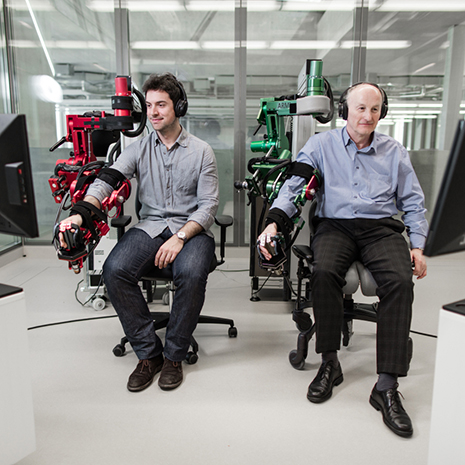Multiplayer Games in Robot-Assisted Rehabilitation
The arm therapy robot ARMin improves motor functions even years after stroke (Klamroth-Marganska et al. 2014). In order to intensify the therapy, supplementary motivational, technology-based motion game platforms are now to be integrated which allow shared and concurrent playing by multiple users. Thus, forms of social interaction are presented to the patient.

The subproject includes four studies on arm therapy devices with foregoing technical developments. The results of the studies will be included in a systematic study of patients with stroke which is planned to take place after this project. In Study I, it will be investigated whether patients in a group therapy using a robotic therapy device work with enhanced intensity and motivation as compared to the usual one-person scenarios. In addition, personality factors are related to gaming preferences. Alongside of the first study, a systematic review is performed that shall present the state of the art in social interaction in robot-assisted and virtual reality based therapy. In Study II, it will be investigated whether skill level adaptation (“assimilation”) enables a “flow” feeling for all participants and reduces frustration and boredom. The robot shall adapt the support for each player individually. In Study III, it will be investigated whether therapists, partners or friends can be involved in group-play scenarios easily. In addition to the therapy robots, more simple game controllers are to be used such as Nintendo Wii controller or a computer mouse. Study IV is a pilot study for a planned long-term study with stroke patients to demonstrate the added value of group game scenarios to improve motor functions. The results of the previous studies I-III are to be included directly in the selection of games and customization of the individual game difficulty.
We expect that our approach of the integration of social interaction spurs the current robotic therapy in terms of motivation and intensity and thus, significantly improves motor learning after stroke.
Funding
- Eat-to-Learn-to-Move project
- ETH Foundation through ETH Research Grant ET-17 13-2
